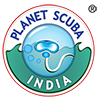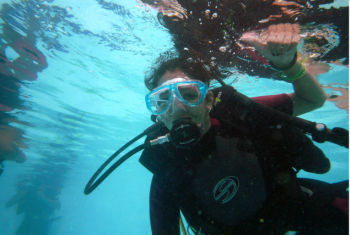By Flora Zigterman
Posted Mon Oct 25, 2010 8:32am AEDT
Green groups say new research shows the need to have the Coral Sea declared a protected marine park.
A study by the International Union for the Conservation of Nature has found the Coral Sea is home to 42 per cent of the world’s endangered and vulnerable coral species.
The Federal Government is considering forming a one million square kilometre marine park encompassing the Coral Sea, with controls on fishing and likely ‘no-take’ fishing-free zones.
Nicola Temple from the Marine Conservation Society says action is needed immediately.
“We’re so used to reacting to immediate threats, to an oil spill or a change in fishing practices that feels so immediately urgent, but this is an opportunity to act now to safeguard what’s already there,” she said.
She says the new research shows only 1 per cent of the Coral Sea is protected.
“We are of course advocating for a very large and fully protected world class marine park in the Coral Seas because it simply would be an unprecedented contribution to marine conservation,” she said.
Rare Cold Water Coral Discovered in Northern Africa


A young Lophelia colony with outstretched polyps. Credit: Tomas Lundälv, Sven Lovén Centre, University of Gothenburg.
A rare cold water coral reef has been discovered off the coast of Mauritania in Northern Africa, the first time such a reef has been found this far south, according to a new report.
In the middle of an enormous rock formation in an undersea canyon, scientists have found a thriving coral ecosystem in deep cold water. This coral wall on the continental shelf off the coast of Mauritania measures about 164 to 197 feet (50 to 60 meters) high and is 118 miles (190 kilometers) long. Cold water coral ecosystems were known to form much further north, around Scandinavia and in the Irish Sea, but this is the furthest south they have been found.
Researchers lowered a robot to the seafloor, 2,000 feet (615 m) underwater. There they discovered a flourishing coral ecosystem. The researchers spotted spectacular animals including a heavily calcified Lophelia coral with orange-red polyps, and gorgonias coral, a common reef building coral in the tropics. Giant clams were hanging on the coral, similar to Norwegian reefs, according to the expedition report.
Unlike tropical corals, cold water corals live at 55 degrees Fahrenheit (13 degrees Celsius) in the dark and nutrient-rich deep sea region below 650 feet (200 m). The study team knew of a loose cold water coral reef which extends to southern regions, said André Freiwald, a team member from University of Gothenburg in Sweden. Until now, however, scientists had only found fossil coral reef structures on the seafloor off the coast of Gibraltar and Morocco.

An octocoral colony with giant clams grows on a dead Lophelia coral colony. Credit: Tomas Lundälv, Sven Lovén Centre, University of Gothenburg.
Near Mauritania the scientists found the powerful carrier crab Paromola and the giant deep sea oyster Neopycnodonte, also never before observed so far south. These giant oysters form thick populations and can be described as Methuselahs among animals, with some individuals living for over 500 years.
The surprising discovery of cold water coral ecosystems may be due to offshore winds pushing the surface waters from the Mauritanian cliffs out into the open ocean. This would create a flow of cold and nutrient-rich water to the coral ecosystems, Freiwald said.
The Maria S. Merian will stop at and chart further parts of the coral system in the canyon of the continental shelf off the coast of Mauritania. The current research voyage ends Nov. 20.
Freiwald expects the next dives on this expedition to provide information as to whether the newly discovered ecosystem represents a single structure or whether a spatially extended living reef province exists in the southern waters.
Yet another scuba diving spot
Netrani is about 10 nautical miles from Murudeshwar
Bangalore: After emerging as a trendsetter in wildlife tourism in the country, the State-owned Jungle Lodges and Resorts is now planning to start a scuba diving camp near the famous Netrani Island.
A popular place for scuba diving in the country, the Netrani Island in the Arabian Sea is located about 10 nautical miles from Murudeshwar. A good destination for snorkelling and diving activities since it has a coral reef, the island boasts of a vast variety of aquatic and avian life.
“We will set up a nature camp at Apsarkonda, near Honnavar, which will act as a base camp for those coming for scuba diving,” Managing Director of JLR N.D. Tiwari, told The Hindu. Apsarakonda, incidentally, also has waterfalls also.
The JLR is planning to provide tent accommodation with about 20 to 30 beds for those undertaking scuba diving. “Scuba diving groups would be roped in to operate diving camps,” he added.
At present, the Indian Navy is using a portion of this small island for its target practise, which is being opposed by environmentalists stating that the coral reef, which is among the only few near a mainland, would be damaged. Only those with prior permission from the Indian Navy can access the island for scuba diving and snorkelling activities.
With regard to the permission from the Indian Navy, Mr. Tiwari said they would initiate talks on this issue and were hopeful of getting the permission.
The camp, he said, would commence in November. “There was a demand from the adventure enthusiasts for a scuba diving camp near the Netrani Island since it is the only place in mainland India where such opportunities can be provided.” At present, the Andaman and Nicobar Islands, and the Lakshadweep Islands offer opportunities for scuba diving, he said.
On other projects, Mr. Tiwari said the black buck resort at Vilaspur near Bidar with a 15-cottage accommodation was ready for inauguration and 15-cottage resort at Talakalale near Jog Falls would be ready by May.
7 new species of fish discovered
Using modern genetic analysis, combined with traditional examination of morphology, scientists at the Smithsonian Institution and the Ocean Science Foundation have discovered that what were once thought to be three species of blenny in the genus Starksia are actually 10 distinct species.
Starksia blennies, small (less than 2 inches) fish with elongated bodies, generally native to shallow to moderately deep rock and coral reefs in the western Atlantic and eastern Pacific oceans, have been well-studied for more than 100 years. It would have been reasonable to assume that there was little about the group left to discover. odern DNA barcoding techniques, however, suggested otherwise. While trying to match larval stages of coral reef fish to adults through DNA, the team of scientists noticed contradictions between the preliminary genetic data and the current species classification. Further investigation revealed that the team was dealing with many species new to science, including the new Starksia blennies.
“DNA analysis has offered science a great new resource to examine old questions,” said Carole Baldwin, a zoologist at Smithsonian’s National Museum of Natural History and lead author of the paper.
“This discovery is a perfect example of how DNA barcoding is illuminating species that we’ve missed before, particularly small cryptic reef fishes like Starksia blennies. We don’t know where we stand in terms of understanding species diversity, and our work suggests that current concepts may be surprisingly incomplete.”
But DNA analysis cannot stand on its own-Baldwin and her team only recognize genetic lineages as species if they are supported by morphology. So traditional morphological analysis, such as comparing patterns of pigmentation and numbers of fin rays, is conducted to solidify their findings.
One interesting aspect of the research is that Starksia species that were thought to be broadly distributed throughout the Caribbean-as most Caribbean reef fish species are-break up into multiple species with geographically restricted ranges.
One species in the study, for example, was divided into three-a species in the east (Bahamas/Turks and Caicos), one in the south (Curacao, Netherlands Antilles) and another in the west (Belize, Central America). Baldwin predicts that other widespread species in the genus may also represent species complexes that break into multiple, geographically distinct species after further study.
Furthermore, the team’s DNA data suggest that other types of Caribbean fish (e.g., some gobies) may similarly represent species complexes comprising numerous new species, and traditional concepts of speciation in the Caribbean may need to be re-evaluated.
The team’s combined molecular and morphological approach has not only increased the number of currently recognized species, it serves as an example of the continuing nature of scientific discovery. Because the resiliency of marine populations to human exploitation may be linked to species richness, an improved understanding of the diversity and distribution of deep-reef life may be critical.
The team’s findings are published in the scientific journal ZooKeys, Feb. 3. (ANI)
SEARCH
All About: Washington, Smithsonian Institution, Smithsonian, Ocean Science Foundation, Smithsonian’s National Museum of Natural History

